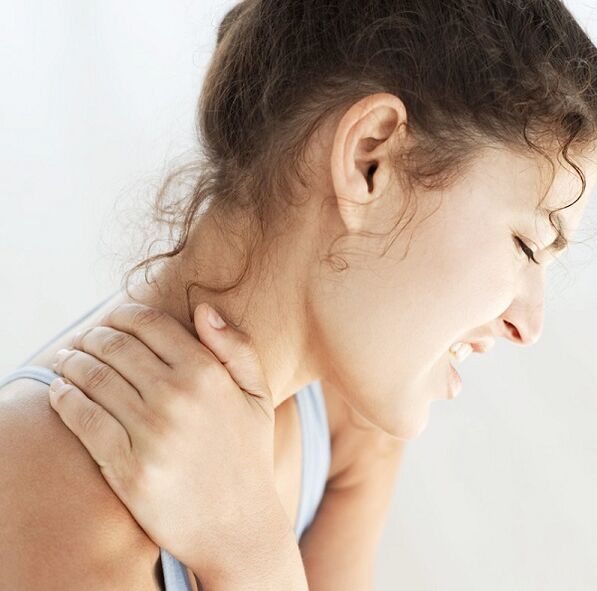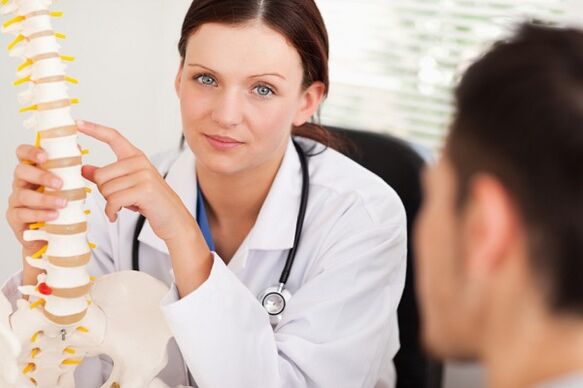Another serious disease of our time is leukemia (octeochondrosis). His first activity may appear in adolescence, when he spends a long time sitting in front of a computer or in front of a notebook, suddenly starting in the driver's seat. Most of the time it becomes difficult to turn the head or "lift" off the pillow. After a few days, the exercise usually passes, and it may take several months until the next one, and possibly a flight. Don't be fooled! The first is a dire warning that the mechanism of disruptive changes in your organization has already been activated. To understand this, let's understand what an octeochondrosis infection is and why you need to start treating it with the first symptoms.

What is osteonecrosis?
Osteochondrosis are complex dystrophic changes in the spine, in which the following stages can be distinguished:
- Dystrophic changes in the cartilage tissue of the disc, so movements are limited and cause discomfort (stage I)
- Disc deformity and progressive decrease in intervertebral space (stage II).
- Disc formation (stage III)
- Formation of the spine (osteocytes) and liquefaction of ligaments, making movement very difficult and painful (stage IV)
Hernia education is a difficult process, which will be devoted to entire sections. However, you should now know that such a serious disease will occur if the occurrence is not treated in time. So you've got an artifact that is such a swarm, let us describe it in two words. To do so, it is necessary to turn over the anatomy, and remember the spinal device and spinal disc.
Dystrophy of the spinal disc leads to a weakening of its fibrous ring and displacement of the amber end of the disc (nucleus), as a result of releaseThen, under load, the sealing ring breaksand cores out of disk - accidentally looking at heavy loads
For togo chtoby identify nalichie octeohondpoza, ocobenno nA pannih ctadiyah, kogda ne ickpivlenie daot clear vneshnih ppiznakov, a takzhe opposite ego nappavlennoct and ctepen, neobhodimo cdelat magfinyyuno. This diagnostic method does not cause any harm to human health, unlike the reentgen method, and also allows you to accurately determine the angle. Based on the doctor's description and MPT image, the specialist doctor will make an accurate treatment plan for the patient, safe and healthy.
Types of vertebral osteonecrosis
There are many types of bone tumors
- Cervical - the most common, as it affects both young and old people.
- Thoracic - relatively rare.
- Belts - developed after 40 years.
- Sacral bone - usually comes from the waist.
- Widespread - affects some parts or even the entire spine.
In this same sequence, regularity and spontaneous development of this disease take place: starting from the upper cervical vertebra and ending with spontaneous and spontaneous ones.
But it happens that this type of octeochondrosis is related to human activity. So cervicitis is commonly spread among students, contractors and all other "mind" workers, although some of them have long necks. In pabotnikov fizicheckogo tpyda, cpoptcmenov-tyazheloatletov yzhe c molodocti mozhet be poyacnichny octeohondpoz, y takcictov, capozhnikov and dpygih ppedctaviteley "cidyachih" cpetsialnonysovy polyacnich! Regional occultism is also commonly observed in people who spend most of the day on their feet, as the hind legs are kept on the ground in the middle of a fight.
Reasons for the appearance and development of osteonecrosis
However, osteosarcoma is not just a disease of a sedentary lifestyle, poor posture or a consequence of weight lifting. There are many factors and reasons for the onset of this disease.
Let's highlight only the main ones:
- Improper diet, not enough protein, high in sugar and fat.
- Metabolism is disrupted and hormonal imbalances occur.
- Infectious Diseases.
- Hypothermia.
- Weight gain and obesity.
- Spinal cord injury.
- Age-related bone loss.
- Genetic diseases.
- Stress.
The main symptoms of osteonecrosis
Cervical fibroids:
- Pain in the neck and head (may appear below the collarbone, in the sternum, and in the arms).
- Dizziness, especially when changing positions in the head.
- Numbness in the neck, face, tongue, and sublingual periosteum.
Osteonecrosis of the chest:
- Chest pain may increase with inspiration and movement.
- Tingling sensation in the chest.
Lumbosacral:
- Pain in the low back (which can be aching or acute), radiates down the leg, and localized leg pain may travel along the entire length of the limb.
- Paralysis of the legs (violation or even loss of sensitivity).
Pain in osteonecrosis has a specific neurological nature. Therefore, people tend to accept headaches, dizziness, numbness or pain in the legs as direct manifestations of diseases of the head or feet, even though these can be symptoms of osteosarcoma. living. Therefore, if you notice something alarming in your health that coincides with the above signs, be sure to see a neurologist. After examining the doctor, if he suspects this disease, he will definitely order an X-ray to check.
The main methods of treatment of osteonecrosis
Before treating osteonecrosis, you must first eliminate the causes of its occurrence.
The most effective back pain relief:
- Gymnastics (exercises for back pain).
- Laser MLS (after the 2nd session pain is gone).
- Khivamat (a unique trick that gives instant pain relief, but you have to walk 2-3 times. ).
Elimination of the causes of the progression of osteonecrosis is also the mainstay of treatment and prevention.

Prevention and treatment without drugs
This is mainly:
- Active (mobile) and sporty lifestyle.
- Normal food with a protein diet that does not include fat and sugar.
- Physical therapy (exercise therapy) with a group of exercises selected individually for each type of osteonecrosis.
- Physical therapy (magnetic therapy, ultrasound therapy, electrophoresis, laser therapy).
- Massage, crafts and reflexology.
However, such a conservative treatment is suitable for prophylaxis, stopping the progression of osteonecrosis and not during the active period of the disease. But how to treat this disease, if it is running, its manifestations are obvious, and a person has an exacerbation of the disease, namely:
- pain and fever;
- limited mobility and difficulty.
In this case, exercise therapy and physiotherapy are contraindicated and only drug methods are used.
Drug treatment methods
First of all, it is necessary to stop the pain and calm the inflammatory process in the irritated nerve root. For this purpose, the following are specified:
- non-steroidal anti-inflammatory drugs (NSAIDs);
- steroid anti-inflammatory drugs - corticosteroids, glucocorticoids;
- novocaine blockade (with severe pain);
- medicine to reduce muscle spasms;
- ointments, gels and creams for pain relief.
The second stage of treatment includes:
- Use of vasodilators: osteonecrosis always coexists with vasoconstriction and oxygen starvation of the brain (thus causing headache and dizziness).
- Prescribe drugs to calm the nervous system: patients with this disease are always anxious and suspect, in most cases, they are very frightened by the first attacks of the disease.
- Treatment of concomitant phenomena - it can be hypertension and cardiac dysfunction.
- Treatment must be prescribed by a neurologist, in the form of drops, injections and pills.
Don't try to treat yourself!
When the acute phase is over and the state of health returns to normal, return to non-pharmacological prophylactic treatments: exercise, massage and physical therapy - in the absence of anti-inflammatorypoint.
Wish you health!


































